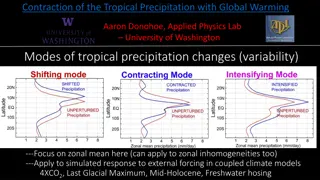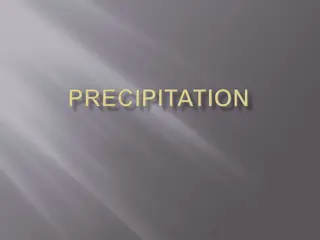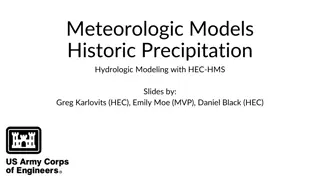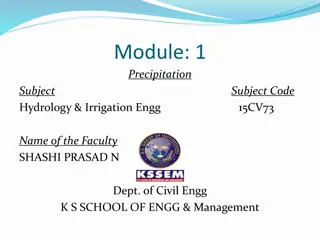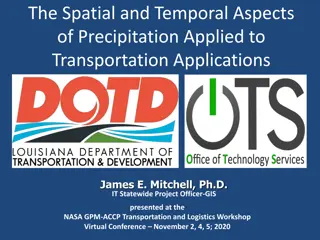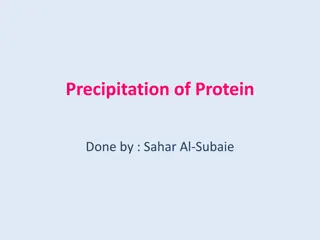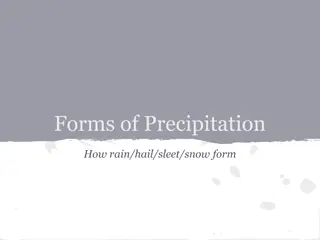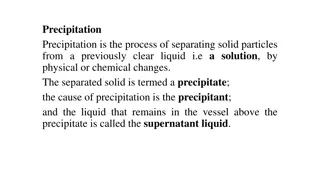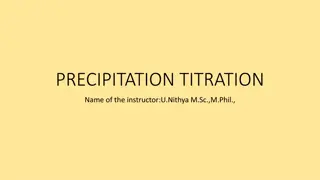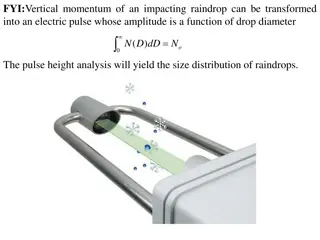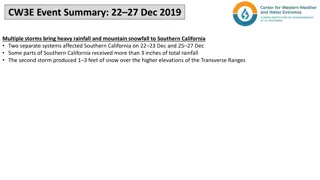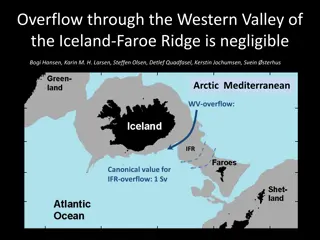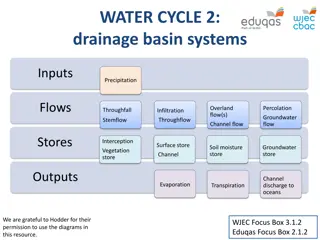Effects of Down-Valley Flow on Precipitation Patterns and Microphysics
Down-valley flow in complex terrain areas like the Alps and British Columbia modifies precipitation patterns through diabatic cooling and melting effects. Observations from the OLYMPEX field campaign show how down-valley flow is influenced by both thermodynamics and pressure gradients, with significant implications for precipitation processes.
Download Presentation

Please find below an Image/Link to download the presentation.
The content on the website is provided AS IS for your information and personal use only. It may not be sold, licensed, or shared on other websites without obtaining consent from the author. Download presentation by click this link. If you encounter any issues during the download, it is possible that the publisher has removed the file from their server.
E N D
Presentation Transcript
Down-valley flow during OLYMPEX: Effects on precipitation patterns and microphysics Joe Zagrodnik Lynn McMurdie, Robert A. Houze Supported by: NASA NNX16AD75G NASA 80NSSC17K0279 NSF AGS-1503155 NSF AGS-1657251 AGU Fall Meeting 13 December 2017
Down-valley flow in precipitating mid-latitude cyclones passing over complex terrain: Observed in the Alps (Mesoscale Alpine Programme) and in Coast Mountains of British Columbia. Evidence suggests that diabatic cooling from melting often forces down-valley flow episodes. (Steiner et al. 2003, Asencio and Stein 2006, Th riault et al. 2012) Some evidence that precipitation patterns are modified by down-valley flow, but it remains to be seen how widespread or significant this interesting mechanism is. (Roe 2005) Steiner et al. (2003)
OLYMPEX Field Campaign 3 RHI scans chosen for observing precipitation and flow: NPOL 270 RHI sees offshore component of flow Quinault River Valley DOW 58.4 RHI sees flow within valley SEA DOW RHI 270 NPOL 50 RHI sees precipitation between coast and valley NPOL SEA-HQM pressure gradient indicates large- scale synoptic forcing HQM
Example DOW RHI Down-valley flow in Quinault Valley Frequently observed (80% of the 283 hours that precipitation was occurring w/ radar observations). 1. What are the forcing mechanism(s)? Melting Layer 2. How does it modify precipitation patterns? Up-valley 3. What microphysical processes are responsible for modifying the precipitation? Down-valley
Is down-valley flow driven by thermodynamics or large-scale pressure gradient? Almost no correlation between down-valley flow height and melting level height. Non-bright band rain Extends above the ridgeline of the Quinault Valley Not true down-valley flow Deep (500-1200 m) down-valley flow Shallow (100-300 m) down-valley flow No down-valley flow
96% down-valley flow 44% down-valley flow Usually shallow Best predictor? Onshore- directed PGF Offshore- directed PGF SEA-HQM pressure gradient Indicates that valley flow is responding to large-scale synoptic forcing
Down-valley flow is also associated with static stability and south-southeasterly flow at low levels Moist Static Stability 925 hPa Wind Direction House conceptual model Figure Stable conditions indicate the potential for large-scale blocking. Precipitation could be enhanced upstream of the mountains Data from NARR reanalysis
Classifying flow regimes using DOW radar 1. Deep reversed flow extending offshore (115 hours) 2. Deep reversed flow not reaching coast (42 hours) 3. Shallow or non-existent reversed flow (114 hours)
Average Rain Rate (Overall) Less in interior valley Next: Highest on ridges Difference between this plot and the three down- valley flow regimes Increases between coast and mountains
1. Deep reversed flow extending offshore Heavier rain on SE side of mountains Lighter rain in valley and at high elevations Heavier rain near coast
2. Deep reversed flow not reaching coast Lighter rain in interior valley and high elevations Heaver rain near SW front slopes Lighter rain near coast
3. Shallow or non-existent reversed flow Heavier rain in valley and at high elevations Lighter rain near coast
Overall Drop Size Distributions (DSDs) Bishop Field Fishery Bishop shifted slightly to the upper-right indicating more drops of all sizes
1. Deep reversed flow extending offshore DSDs by flow regime All DSDs are dominated by stratiform rain No strong preference for enhancement of smaller or larger drops 2. Deep reversed flow not reaching coast 3. Shallow or non-existent reversed flow
Conclusions 1. What are the forcing mechanism(s) for down-valley flow? -Large-scale synoptic forcing -Diabatic cooling could still help maintain shallow down-valley flow at times 2. How does down-valley flow modify precipitation patterns? -Heavier rain near coast, lighter in the interior when deep down-valley flow is present. 3. What microphysical processes are responsible for modifying the precipitation? -Inconclusive, likely because other orographic enhancement signals are more important.


